Natural Bedding and Linens Guide for Truly Sweet Dreams
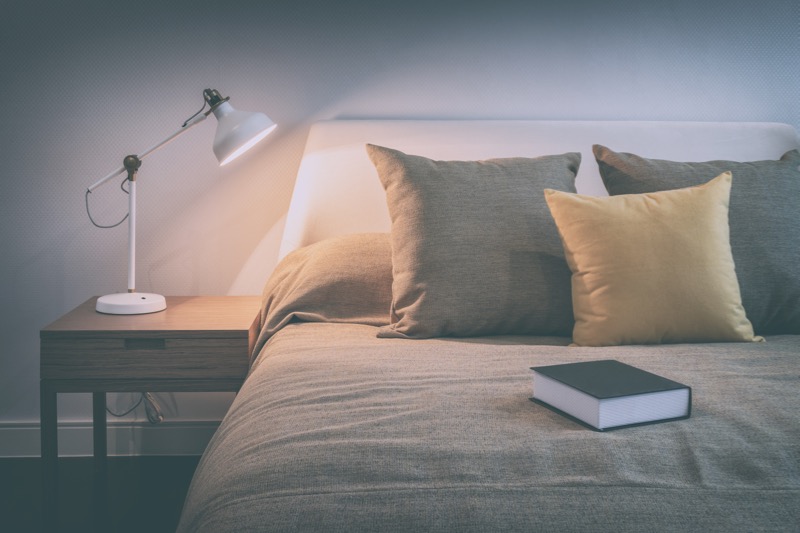
We spend one-third of our lives sleeping. You know what this means, right? This means we spend more time between the sheets and laying on our mattress than we do in any single pair of jeans, sweats, sneakers, hoodies, or party dresses. More than we spend lying on the couch, at work or driving in our cars.
And yet the way we spend and value quality when it comes to beds and bedding doesn’t always reflect this. Too often the bed and our linens are an area where we wait for sales, or we put these items on the back burner because it’s not something anyone else sees or experiences.
What you choose to sleep on and in could be one of the most critical decisions you can make. And the best part is, you only need to make this decision a few times throughout your lifetime!
It’s therefore critically important to create a healthful environment that helps us sleep better. Of course, this also includes what we eat throughout the day, the temperature of our bedroom, the mobile devices that surround us, and what we choose to sleep on – meaning our mattress and our bedding. In other words, if we’re going to be spending a third of our lives in contact with the sheets (especially when we’re naked!), choosing top-quality bedding is definitely the way to go.
why conventional bedding options can be harmful
Conventional bedding options are often loaded with chemicals that get super cozy with our skin and that’s why as part of any healthy lifestyle, the natural bedding we sleep on is going to play a role in our overall health.
The goods news? This is an easier problem to address than your clothing.
Given that my bed is actually my most favourite place to be (oh introverted me), when we got our new bed in 2016, I spent months researching every aspect to create the most perfect womb in the world!
(If you’re interested in learning about whole-home health, discover more about How I Created a Healthy Home here.)

The Dangers of Conventional Cotton
One of the most popular bedding fabrics is cotton. I love it. It’s a natural fiber, it’s crisp and fresh feeling, it breathes and it washes and dries easily. Unfortunately, cotton is one of the dirtiest crops in the world because it’s so heavily sprayed with pesticides.
Cotton Facts and Figures
- 2.4% of the world’s usable cropland is planted with cotton.
- Cotton farming accounts for 24% of the world’s global insecticide sales and 11% of the world’s pesticide sales.
- Cotton crops are genetically modified, which carries an immense array of risks you can read about in-depth here.
- Conventional cotton farming’s massive use of pesticides and water contributes to environmental pollution and the destruction of ecosystems. This affects us and the other animals on the planet.
- Eight of the top 10 pesticides used in conventional U.S. cotton are classified as moderately to highly hazardous by the World Health Organization.
- 1-3% of cotton workers are affected by acute poisoning.
- Child labour is common in conventional cotton farming.
Unfortunately, chemicals and pesticides don’t just disappear once they hit the shelves of our favourite department store or we toss them in the washing machine – we are exposed to them as we sleep or relax in the bedroom.
Conventional Bedding and Chemical Treatments
The fabrics used in conventional bedding, both linens made of natural fibers like cotton or linen and polyester options, can be treated with extra plastics, harmful dyes and pigments or additional chemicals to make them stain-resistant, water-resistant, static-resistant or fire-resistant.
One study of Wisconsin households tested exposure levels of one flame retardant, polybrominated diphenyl ethers (PBDEs), that are commonly used in a variety of products such as bedding and upholstery. Researchers found PBDEs in vacuum cleaner dust, blood serum samples and in the air.
To clarify, these chemicals don’t stay confined within the weaves of the fabrics – we not only inhale them as we sleep, but they also spread throughout our homes and when we wash them, they have the potential to react with the chemicals in the municipal water to create harmful byproducts.
Dust Mites + Allergens
Our sheets can actually be quite gross – and I don’t mean gross like your children away at college who only wash them once every solar eclipse. Dust mites that live in our sheets can be highly allergenic and contribute to asthma symptoms as well. These little critters absolutely love our carpets, mattresses and beds.
In addition, our bedding can also accumulate bacteria, pollen, animal dander, human sweat and other secretions, and fungi. Delicious!
One study of pillows showed the average pillow has between 4 and 16 different species of fungi. And speaking of pillows, you don’t have to be a germaphobe to be totally grossed out by the estimate that 1/3 of our pillow weight is actually dust-mites, dead skin and other critters and bacteria (which is why whenever possible I travel with my own! Would rather it be my own dead skin!).
While many dust mites and allergens can be greatly reduced by washing our bedding on a regular basis, be mindful of what you’re using to clean your sheets. Common household cleaners like laundry detergent and dryer sheets have an array of volatile compounds that are detrimental to our health. Check out some natural home cleaning options here.
The great news here is that natural fibers like organic cotton and wool are naturally resistant to mites, fungi and bacteria. Winning all around!
Bonus tip! You can also help reduce allergens in your bedroom by investing in a medical grade air purifier. The Jaspr Pro is the one I use and love (use code MTBREATHE at checkout to save big). 
Best Natural Bedding Options
The good news is that it’s easy to reduce your exposure to potentially harmful chemicals and toxins by choosing natural bedding for your bedroom.
Best Bedding Fabrics:
- Organic and fair-trade cotton
- Natural linen
- Bamboo, hemp and wood pulp (also sold under the trade names Lyocell, Tencel and Legna)
- Wild organic silk
Natural Bedding and Dyes
- Organic bedding is now available in brilliant hues derived from vegetable and mineral dyes
- With white sheets, look for those treated with oxygen-based bleaches rather than with chlorine, which pollutes water supplies
- Undyed, unbleached bedding offers simplicity and purity – this one is often preferred for baby cribs
Natural Bedding for Kids
- I wrote an entire post about Healthy Nursery Essentials, where I share more about the sheets, crib, mattresses and more we purchased for our son’s nursery.
Signs and Symbols of Natural Bedding Goodness
- Certified organic by the U.S. Department of Agriculture (USDA)
- Fair trade certification
- GOTS certification (Global Organic Textile Standard)
- OEKO-TEX
some natural bedding options to start with
These are a few linen brands to get you started on your search.
Natural Bedding: Pillow Talk
- Organic Buckwheat: Look for ones with an organic wool outer layer to muffle the ‘crunchy’ sound.
- Organic Wool: Wool is also naturally mold, mildew, and fire-resistant, they also wick moisture away.
- 100% Natural Latex
- Organic Cotton: Choose organic cotton pillows that are made without perfumes, formaldehyde, or dyes. Organic cotton pillows are very soft and will compress over time.
Looking For a New Bed?
If you’re in the market for a new mattress, we have bought several mattresses from Sunshine Mattress Co. Use the coupon code MEGHAN10 for 10% off mattresses and accessories.
Let your bed be a place to rest and rejuvenate. You don’t need to toss out what you have now, but when it’s time to update and upgrade, you now know where to start in your search.
In the meantime, start washing what you have in natural, chemical-free detergents and check out what your pillows are made of and follow the recommended cleaning instructions. Both of those small steps are a great start!
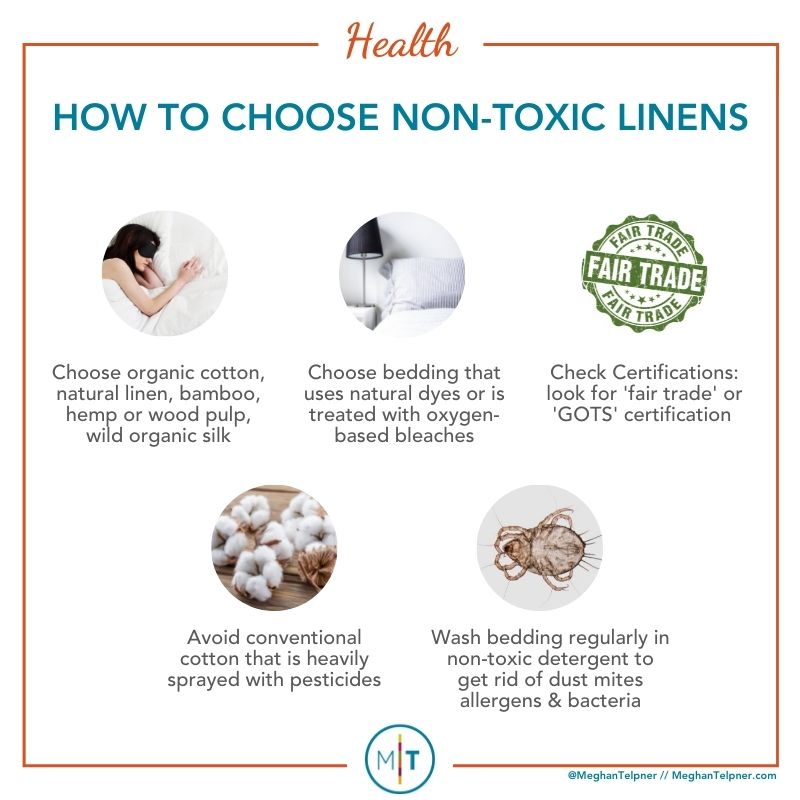
Free Resource Library
Enjoy more than 40 downloadable guides, recipes, and resources.
















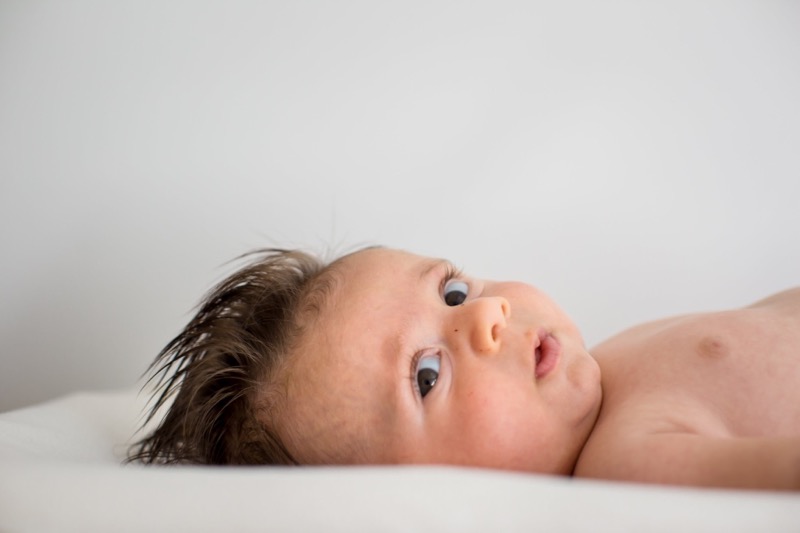
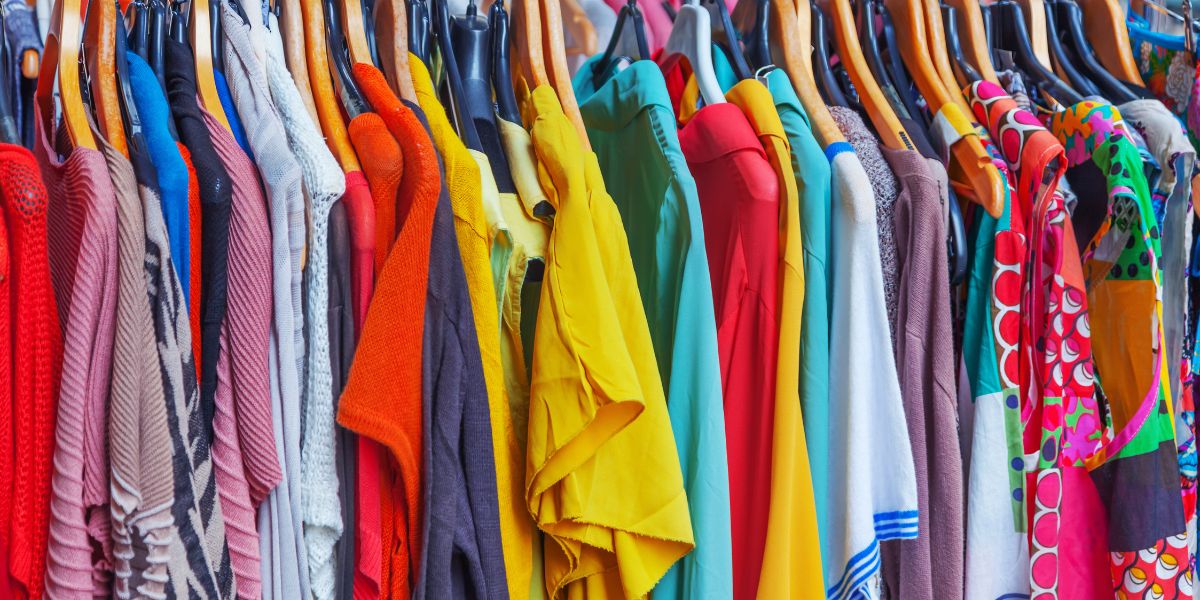

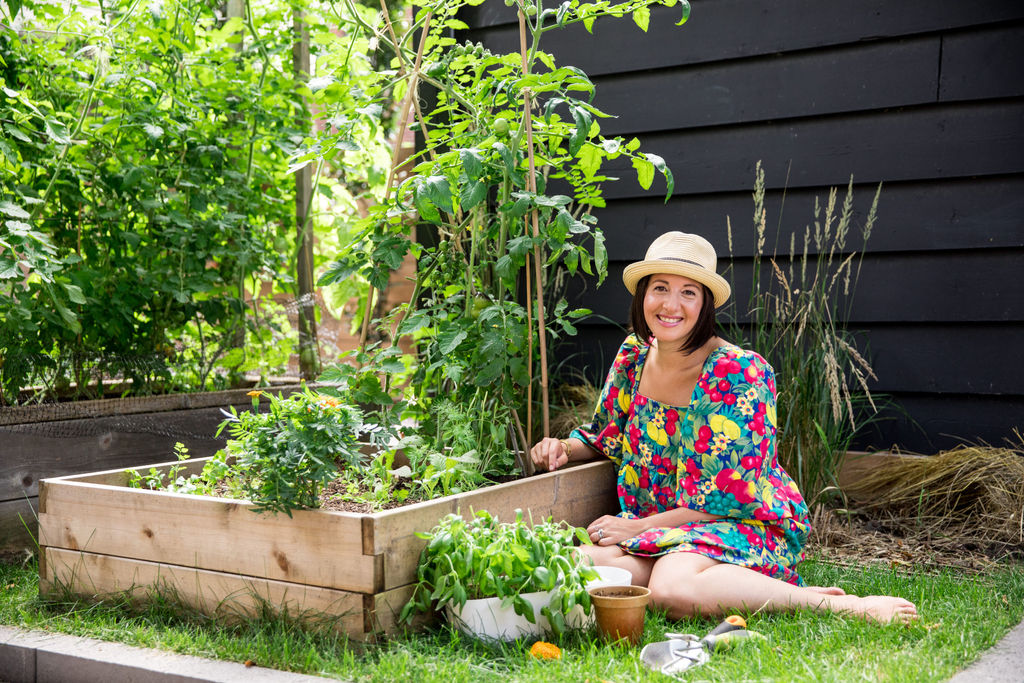
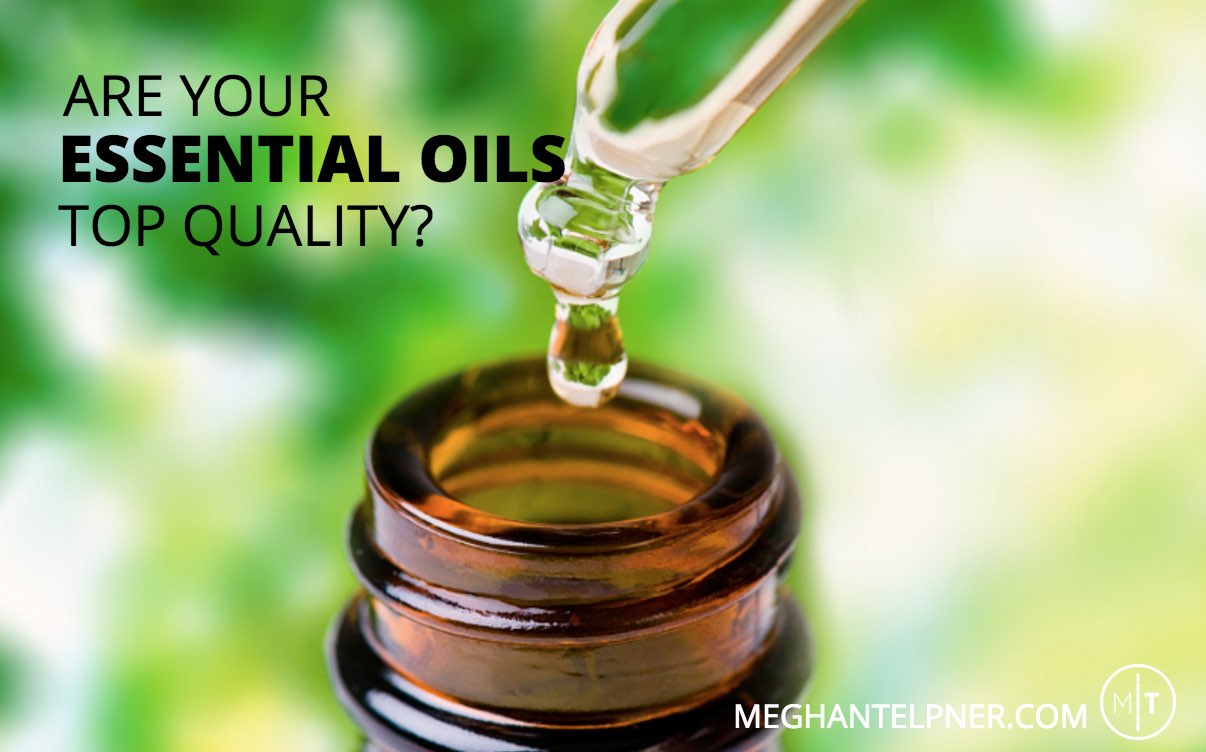



Hi Meghan – can you tell me if there is a store for purchasing sheets here in the toronto area that are the kind you recommend?
Hi Meghan,
I learned that in order to make fabric out of bamboo, there are several chemicals that need to be used and it’s a difficult and expensive process, resulting in not so eco friendly products being sold, as people may think. Did you find out similar information when researching about this topic? You can read more in here:
https://heartsleevesblog.com/the-truth-about-bamboo-5b6af44edba0#.4ga6hi9xi
Thanks
Hi Meghan! What do you think about sheets made from eucalyptus vs bamboo sheets?
Thanks!
Hi Meghan! So I missed out on the registration for the course and am starting to research a new mattress.. is there any chance you will be putting out a blog post on that (or opening up really late registration for your course)?! Thanks!
How often is “regularly” when it comes to washing your pillows? Every season? Every month?
thanks for the info Meghan! I’ve also been wondering / looking for recommendations on mattresses. I’ve spent so much time researching and I just don’t know which mattress company to believe. It is for my toddler who we will be building our own bed frame with hardwood and non toxic finish but want to give her a healthy sleep surface too without breaking the bank. I don’t even know if this is possible?! wondering if you have any recommendations. thanks for sharing your wisdom!
Great article! Although I was somewhat disappointed that when I scrolled to the end there were no specific recommendations. I am in Toronto. Could you please recommend stores in Toronto (or the area) or on line? I have looked at some already but they are mostly white and quite expensive.
I hope to hear from you.
Our family purchased 3 queen mattresses, bed frames and all our bedding from Dormio! Got a 10% discount from Meghan’s referral on top of our great discounts we got for making our big investment. My husband is installing beautiful nontoxic, sustainably made hardwood right now, before the beds arrived. So excited! Instead of spending loads on a bedroom suite we spent it on the mattress and bedding. We have antique dressers we purchased at a local shop.
I have a wool mattress from shepherdsdream.ca that was purchased about 2 years ago. I also purchased a mattress topper with it. I have been very happy with the quality of the mattress, although it did take a few weeks to get used to sleeping on this kind of mattress. It doesn’t use a boxspring so you need a special slatted frame for it.
Any recommendations for organic sleepwear for adults? I’m having a hard time finding options. We have an organic bed and organic sheets and who love the same option for sleepwear. Thx.
Hi Megan! Great article. I’m from the US. Any recommendations for mattress companies similar to the “Sunshine” one you recommend? Thank you!